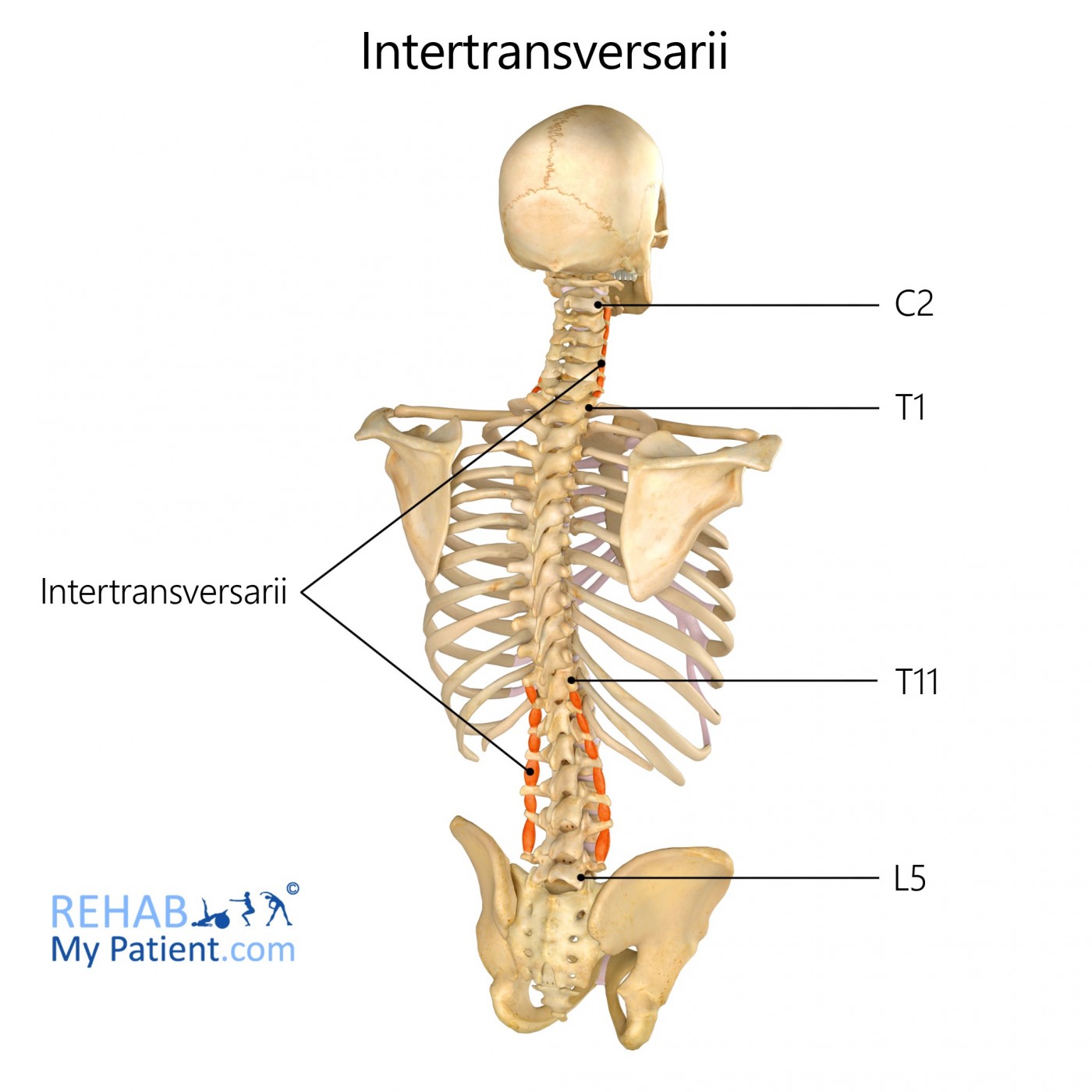
General information
Intertransversarii, also known as the intertransverse muscles, are deep muscles of the back.
Literal meaning
The muscles between the transverse processes.
Interesting information
The intertransversarii muscles are small muscles which are situated between the transverse processes of the vertebrae. The intertransversarii are divided into two distinct groups. These are the epaxial intertransversarii group and the hypaxial intertransversarii group. According to some anatomical classifications, the epaxial group constitutes the true intertransverse muscles while the hypaxial group is more appropriately characterized as a subgroup of the intercostal muscles.
There are also three subdivisions of the intertransversarii muscles which reflect their location along the spinal column: cervical, thoracic, and lumbar. The muscles are more substantial and developed in the cervical region. There are seven pairs of intertransversarii in the cervical area. The first pair is situated at the atlas and axis and the last pair is near the first thoracic vertebrae. The thoracic subdivision has unpaired intertransversarii muscles between the transverse processes of the three inferior vertebrae. Most of the intertransversarii muscles are innervated by the anterior rami of the spinal nerves, but several muscle pairs in the lumbar subdivision are innervated by the posterior rami instead.
The primary function of the intertransversarii muscles is to move the trunk of the body laterally. Thus, they are crucial for bending and straightening the spine. They are also important in maintaining proper back posture while sitting. Injury to these muscles will cause pain and discomfort in the back and possibly limitation of spinal movement or compromised posture.
Origin
Transverse process of the vertebrae.
Insertion
Transverse process of the superior vertebrae.
Function
Laterally flex (bend) the spine; postural muscles.
Nerve supply
Anterior rami of the spinal nerves.
Blood supply
Vertebral artery.

Relevant research
Weakened trunk muscles, especially deep muscles of the back, may be tied to limitations to the stabilization function of those muscles. Strengthening the muscles through targeted exercise may therefore lead to improvements in trunk and spinal stabilization.
Kim K, Lee SK, Kim YH. (2010). “The biomechanical effects of variation in the maximum forces exerted by trunk muscles on the joint forces and moments in the lumbar spine: a finite element analysis”. Proc Inst Mech Eng H. 224(10):1165-74.
Radiological assessment of sufferers of lower back pain reveals that the pain is often the result of abnormal lumbar lordosis or sacral inclination. A higher body mass index and advanced age place patients at higher risk for developing lower back pain secondary to these anatomical conditions.
Tüzün C, Yorulmaz I, Cinda? A, Vatan S. (1999). “Low back pain and posture”. Clin Rheumatol. 18(4):308-12.
Intertransversarii exercises

Contralateral limb raises are an effective way to activate the deep muscles of the back, including the intertransversarii muscles. Lie on your stomach on a flat but comfortable surface. Your arms and legs should be fully extended. Lift your right arm and left leg from the floor and hold that position for ten seconds. Then return to the starting position. Now lift your left arm and right leg from the floor and hold it for ten seconds. Continue alternating in this manner for two sets of ten.
Sign Up
Sign up for your free trial now!
Get started with Rehab My Patient today and revolutionize your exercise prescription process for effective rehabilitation.
Start Your 14-Day Free Trial